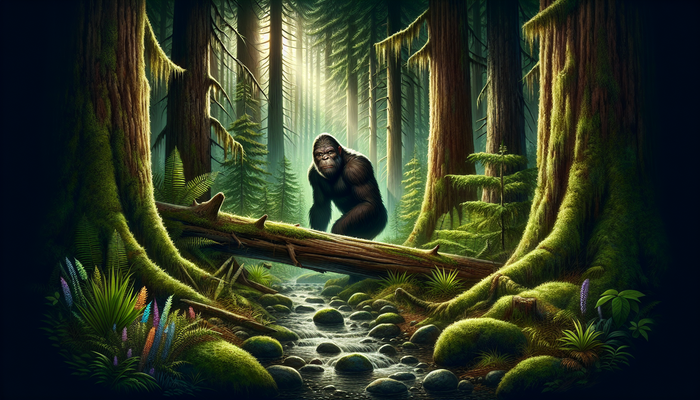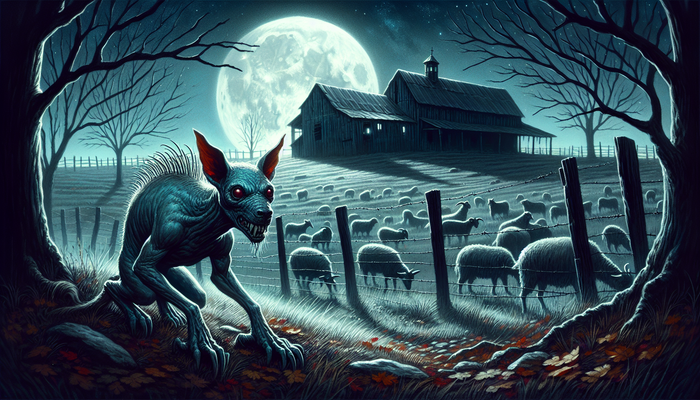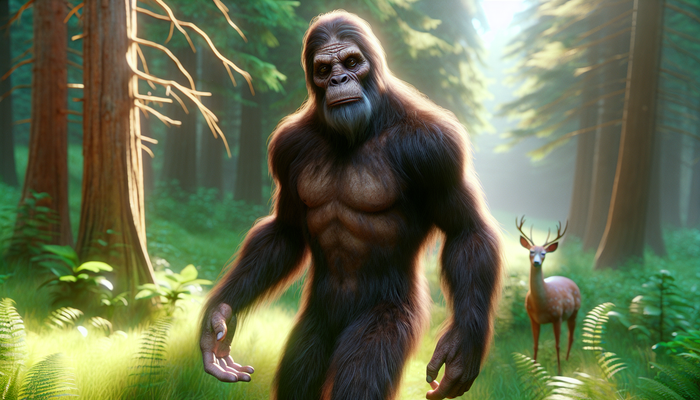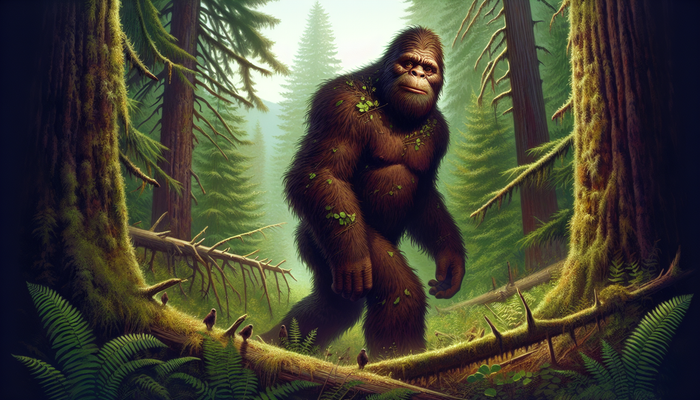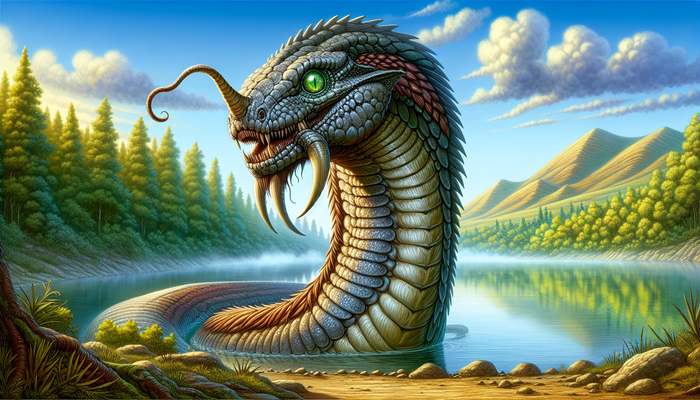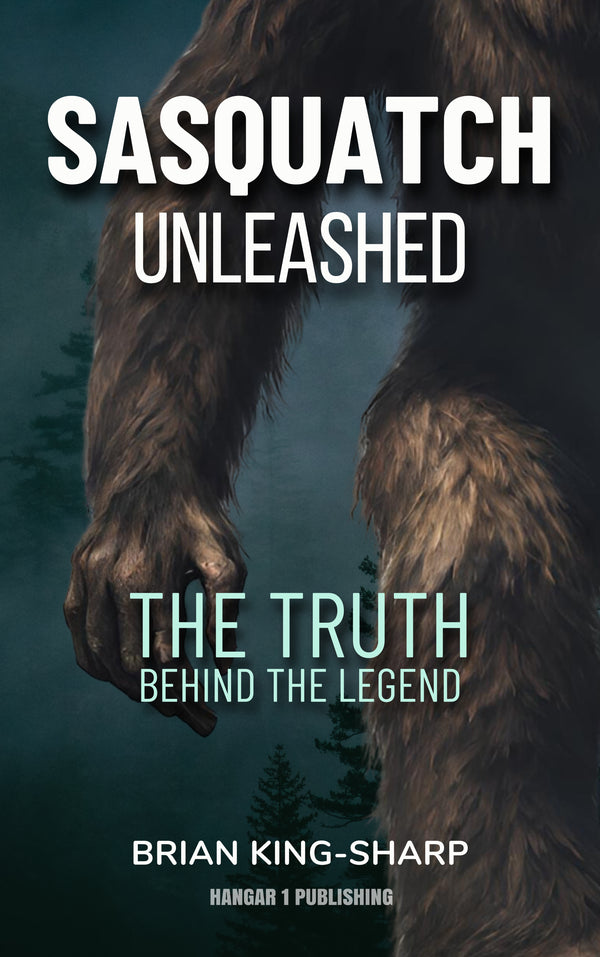Washington Cryptids: From Bigfoot to Batsquatch
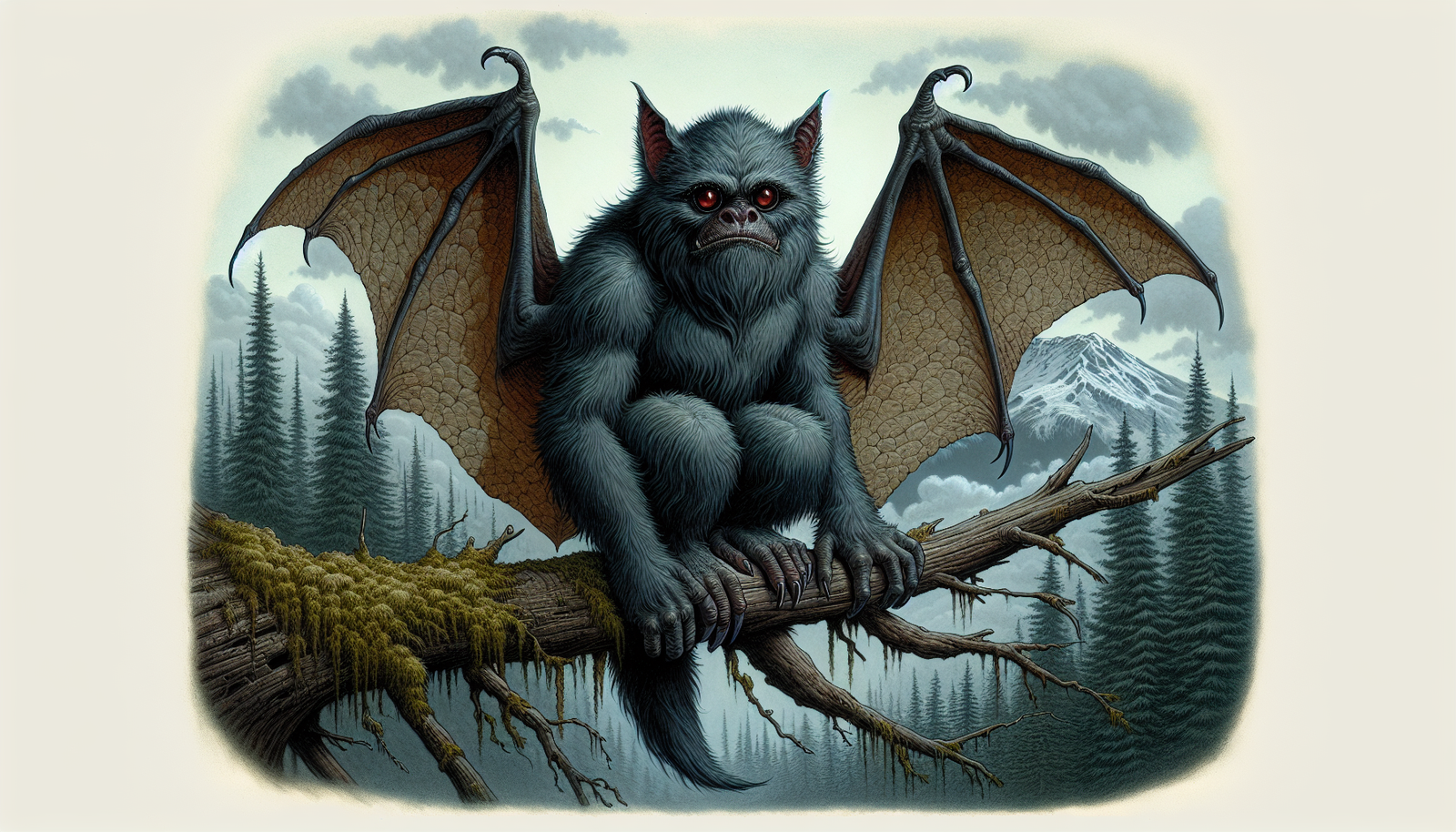
By Dr. Elizabeth Harper, Cryptozoologist
Nestled in the misty forests, rugged mountains, and deep waters of the Pacific Northwest, Washington state has long been a hotbed of cryptozoological activity. From the dense temperate rainforests of the Olympic Peninsula to the fog-shrouded coasts of Puget Sound, Washington is home to an incredible diversity of legendary creatures that have captured the imaginations of locals and cryptid enthusiasts alike for generations. As a seasoned biologist and historian in the Bigfoot research community, I've dedicated my life to uncovering the truths hidden in the natural world, and there's no better place to explore the mysteries of cryptids than in the Evergreen State.
Cryptids, for those unfamiliar with the term, are animals whose existence is unsubstantiated or disputed by mainstream science. These elusive creatures exist in the shadowy realm between myth and reality, tantalizing us with the possibility that there are still wonders to be discovered in the modern world. And Washington, with its vast stretches of untamed wilderness, is the perfect habitat for these legendary beasts to roam.
In this article, we'll embark on a fascinating journey into the world of Washington's most iconic cryptids, from the mighty Sasquatch to the enigmatic Batsquatch, and from the serpentine sea monsters of the coast to the phantoms and apparitions that haunt the state's forests and lakes. Along the way, we'll examine the evidence, explore the theories, and delve into the rich folklore and history surrounding these mysterious creatures. So grab your hiking boots and your sense of adventure, and let's set off into the misty wilds of Washington to track down some cryptids.
Bigfoot: Washington's Gentle Giant
No discussion of Washington cryptids would be complete without starting with the most famous of them all: Bigfoot, also known as Sasquatch. This towering, bipedal humanoid, covered in dark hair and leaving behind enormous footprints, has become synonymous with the Pacific Northwest and is practically a cultural icon in Washington.
Standing 7 to 10 feet tall and weighing up to 1,000 pounds, Bigfoot is an imposing figure to say the least. Eyewitnesses describe a powerfully built creature with broad shoulders, long arms, and a crested head. Its feet, which have become its most famous feature, are said to measure up to 24 inches long and 8 inches wide. Tracks attributed to Bigfoot often show a distinctive pattern of five toes arranged in a curved line.
But despite its intimidating size and appearance, Bigfoot is generally considered to be a gentle giant. Most sightings describe a shy, reclusive creature that goes out of its way to avoid human contact. When encountered, Bigfoot is more likely to flee into the forest than confront humans aggressively. This elusive nature has allowed the creature to evade capture and maintain its air of mystery for decades.
Washington is undoubtedly the epicenter of Bigfoot activity in North America, if not the world. The Bigfoot Field Researchers Organization (BFRO), which maintains a database of sightings, lists over 700 reports from Washington alone - more than any other state. Pierce County seems to be a particular hotspot, with 83 reported encounters. The dense forests and remote wilderness areas of the Olympic Peninsula, the Cascades, and the Colville National Forest provide ample habitat for a creature as large as Bigfoot to remain hidden.
Interestingly, the name "Sasquatch" has its roots in the languages of the indigenous peoples of the Pacific Northwest. "Sasquatch" is an Anglicization of the Salish word "Sasquits," meaning "wild man" or "hairy man." Many native tribes have long oral traditions featuring wild men of the woods, giant hairy humanoids who lurk in the forests. The Lummi call them Ts'emekwes, the Salish refer to them as Sasquatch, and to the Colville they are Skanicum. These legends predate European contact and form the foundation of the modern Bigfoot mythos.
The first widely publicized Bigfoot sightings occurred not in Washington, but in neighboring California. In 1958, large humanoid footprints were discovered in Bluff Creek, sparking a media frenzy. Plaster casts were made of the prints, which measured up to 16 inches long. The Bluff Creek tracks launched Bigfoot into the public consciousness and established the creature as a bona fide cryptozoological phenomenon.
But it was the Patterson-Gimlin film, shot in 1967 also in Bluff Creek, that would become the most famous and controversial piece of Bigfoot evidence. The shaky, minute-long footage shows what appears to be a large, hairy, bipedal creature striding through a clearing. The film has been endlessly analyzed, debated, and scrutinized in the decades since. While some claim it's the best evidence of Bigfoot's existence, others dismiss it as an elaborate hoax. Regardless, the Patterson-Gimlin film has become an indelible part of Bigfoot lore.
So what exactly is Bigfoot? Theories abound, but hard evidence remains frustratingly elusive. Some researchers believe Bigfoot could be a relict population of Gigantopithecus, a huge extinct ape known from fossils in Asia. Others speculate it may be an undiscovered species of hominid, a North American great ape, or a human-primate hybrid. More outlandish theories propose that Bigfoot is an interdimensional being, an extraterrestrial visitor, or a creature of pure myth.
The fact that no Bigfoot specimen has ever been captured or killed, despite decades of searching, has only deepened the mystery. Bigfoot seems to possess an uncanny ability to evade detection, melting into the dense forests and rugged backcountry. Whether this is due to its intelligence, its natural stealth, or its possible nonexistence is still hotly debated.
But for many in Washington, particularly those who claim to have seen the creature firsthand, Bigfoot is no myth. It's a living, breathing animal that shares the state's wilderness areas. The persistence of sightings, the depth of native lore, and the tantalizing bits of evidence keep the legend alive and the search ongoing. Until definitive proof is found, Bigfoot will continue to be Washington's most famous and enduring cryptozoological mystery.
Batsquatch: The Winged Wonder of Mount St. Helens
While Bigfoot may be Washington's most well-known cryptid, it's far from the only strange creature said to roam the state's forests. Enter Batsquatch, a bizarre hybrid that combines the body of a Sasquatch with the wings of a bat and the face of a wolf. This flying monstrosity has been sighted soaring over the Cascade Mountains, with a particular connection to Mount St. Helens.
Eyewitnesses describe Batsquatch as a large, bipedal creature similar in stature to Bigfoot, but with some key differences. Instead of being covered in dark hair, Batsquatch has a coat of bluish-gray fur. Its face is said to resemble a wolf or a canine, with large, pointed ears and glowing red eyes. Most strikingly, Batsquatch sports a pair of leathery, bat-like wings that span up to 50 feet. These wings allow the creature to fly, gliding silently over the treetops.
Batsquatch sightings are a relatively recent phenomenon, with most reports occurring in the 1980s and 1990s. Interestingly, many of these sightings happened in the vicinity of Mount St. Helens, particularly in the years following the mountain's catastrophic 1980 eruption. This has led some researchers to speculate that Batsquatch may have been driven out of its subterranean lair by the volcanic activity, or that the creature was somehow mutated or awakened by the cataclysmic event.
One of the most detailed Batsquatch encounters occurred in April 1994 near Mount Rainier. Brian Canfield, an 18-year-old motorist, was driving through the mountains when his truck suddenly stalled. As he tried to restart the engine, a huge winged creature landed on the road in front of him. Canfield described the beast as standing around 9 feet tall, with blue fur, a wolf-like face, and glowing red eyes. The creature remained in front of Canfield's truck for several minutes before unfurling its wings and flying off, the force of its takeoff rocking the vehicle.
Canfield's sighting, while the most famous, is not the only Batsquatch report from the region. Other witnesses have described seeing a similar creature gliding over the forests of the Gifford Pinchot National Forest, the Mount Baker-Snoqualmie National Forest, and the Mount St. Helens National Volcanic Monument. Some even claim to have found large, unusual footprints in the volcanic ash and mud around Mount St. Helens, suggesting Batsquatch may have been active in the area immediately after the eruption.
The connection to Mount St. Helens has fueled speculation about Batsquatch's origins and nature. Some researchers believe the creature may be a previously unknown species of giant bat or flying primate that was forced out of its cave system by the eruption. Others propose a more supernatural explanation, suggesting Batsquatch could be a spirit animal, a shape-shifting entity, or a guardian of the volcano.
Intriguingly, Batsquatch shares some similarities with another famous winged cryptid: the Mothman of Point Pleasant, West Virginia. Like Batsquatch, Mothman is described as a large, humanoid creature with glowing red eyes and a wingspan of around 10 feet. Mothman sightings also tend to cluster around sites of impending disaster, such as the collapse of the Silver Bridge in 1967. This has led some to speculate that creatures like Mothman and Batsquatch may be harbingers of doom, appearing as omens or warnings of catastrophic events.
Whether Batsquatch is a flesh-and-blood animal, a supernatural entity, or a figment of overactive imaginations remains to be seen. The creature's elusive nature and preference for remote, heavily forested areas make it a challenging subject for study. But the persistence of sightings and the consistency of descriptions suggest there may be more to the Batsquatch legend than mere myth.
For now, Batsquatch remains a tantalizing mystery, a strange and terrifying creature that adds to the rich tapestry of Washington's cryptozoological lore. The next time you find yourself hiking through the Cascades, keep an eye on the skies. You never know when you might catch a glimpse of this flying cryptid soaring overhead.
Sea Serpents of the Pacific Northwest
Washington's cryptid menagerie isn't confined to the land. The state's coastal waters and inland lakes are said to be home to a variety of aquatic monsters, from giant octopuses to serpentine dragons. These sea and lake cryptids add an extra layer of intrigue to Washington's already rich folklore.
Cadborosaurus: The Serpentine Sea Monster
One of the most famous aquatic cryptids of the Pacific Northwest is Cadborosaurus, affectionately known as "Caddy." This sea serpent is said to inhabit the coastal waters off Washington, particularly around Puget Sound and the Strait of Juan de Fuca. Eyewitnesses describe a long, sinuous creature with a serpentine body, a horse-like head, and a series of humps or coils along its back.
Cadborosaurus sightings date back centuries, with indigenous peoples of the Pacific Northwest coast telling stories of giant sea serpents that could overturn canoes and drag swimmers to their doom. But the creature didn't gain widespread attention until the 1930s, when a series of high-profile sightings put Caddy on the cryptozoological map.
In October 1933, a couple sailing in the Strait of Juan de Fuca near Victoria, British Columbia, reported seeing a strange creature swimming in the waters. They described it as being around 30 feet long, with a greenish-brown body and a series of dark, irregular markings along its sides. The couple watched the creature for several minutes as it swam alongside their boat, its head and neck extending up to 8 feet out of the water.
This sighting sparked a wave of Cadborosaurus reports up and down the Pacific coast, with dozens of witnesses coming forward to describe their own encounters with the sea monster. Many of these sightings occurred in the waters around Vancouver Island and Puget Sound, suggesting Caddy had a particular affinity for the region.
The creature's name, Cadborosaurus, comes from Cadboro Bay, a small inlet near Victoria where many of the early sightings took place. In 1933, Archie Wills, the editor of the Victoria Daily Times, held a contest to come up with a formal name for the beast. The winning entry was Cadborosaurus willsi, the species name a nod to Wills himself.
Descriptions of Cadborosaurus are remarkably consistent across sightings. Witnesses typically report a creature with a long, serpentine body, often with multiple humps or coils visible above the surface. The head is usually described as small and horse-like, sometimes with a mane or crest running down the neck. Estimates of Caddy's length vary widely, from around 30 feet up to a staggering 150 feet. Some reports mention large, paddle-like flippers or a powerful, vertical tail fluke.
One of the most striking features of Cadborosaurus sightings is the creature's behavior. Witnesses often report the beast suddenly rearing its head and neck high out of the water, as if to get a better look at its surroundings. This action is sometimes accompanied by a loud, huffing or snorting sound, like a large animal exhaling forcefully. After a few moments, Caddy will typically submerge again, its humps or coils slipping beneath the surface and disappearing from view.
So what could Cadborosaurus be? Theories range from the plausible to the fantastical. Some researchers suggest Caddy could be a surviving species of Mesozoic marine reptile, such as a plesiosaur or a mosasaur. These ancient sea creatures, long thought extinct, match many of the physical descriptions of Cadborosaurus. Others propose that Caddy may be a previously unknown species of elongated shark, a giant eel, or a massive invertebrate like a giant squid or cuttlefish.
More skeptical observers argue that Cadborosaurus sightings can be explained by misidentifications of known animals. A pod of swimming sea lions, a large sturgeon, or a line of ocean debris could create the illusion of a single, serpentine creature when viewed from a distance. Some even suggest that Caddy may be nothing more than a series of tall tales and hoaxes, perpetuated by attention-seeking sailors and gullible media.
Regardless of its true nature, Cadborosaurus has become a beloved part of Pacific Northwest folklore. The creature has been featured in numerous books, documentaries, and TV shows, and has even been proposed as an official symbol of British Columbia. For many residents of the region, Caddy is a reminder of the mysteries that still lurk beneath the waves, waiting to be discovered.
From Bigfoot to UFOs: Hangar 1 Publishing Has You Covered!
Explore Untold Stories: Venture into the world of UFOs, cryptids, Bigfoot, and beyond. Every story is a journey into the extraordinary.
Immersive Book Technology: Experience real videos, sights, and sounds within our books. Its not just reading; its an adventure.


